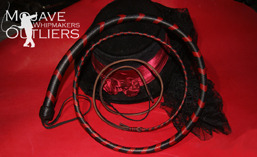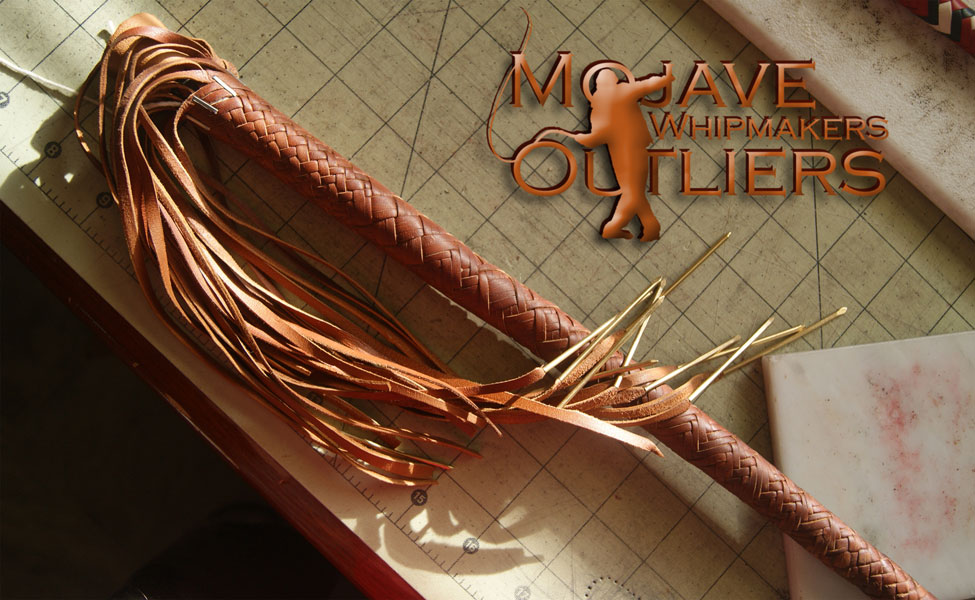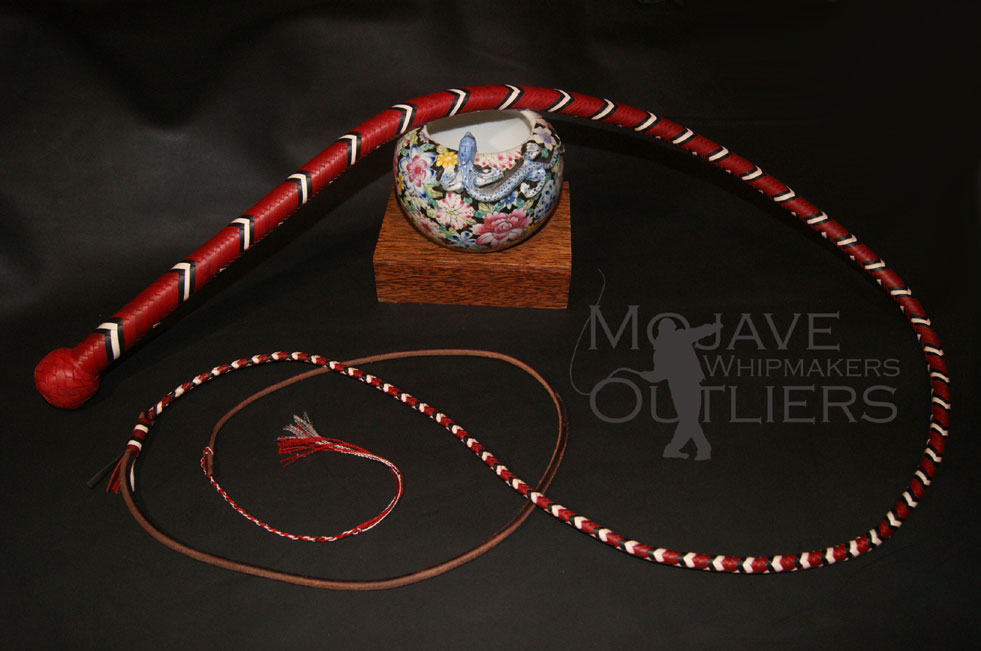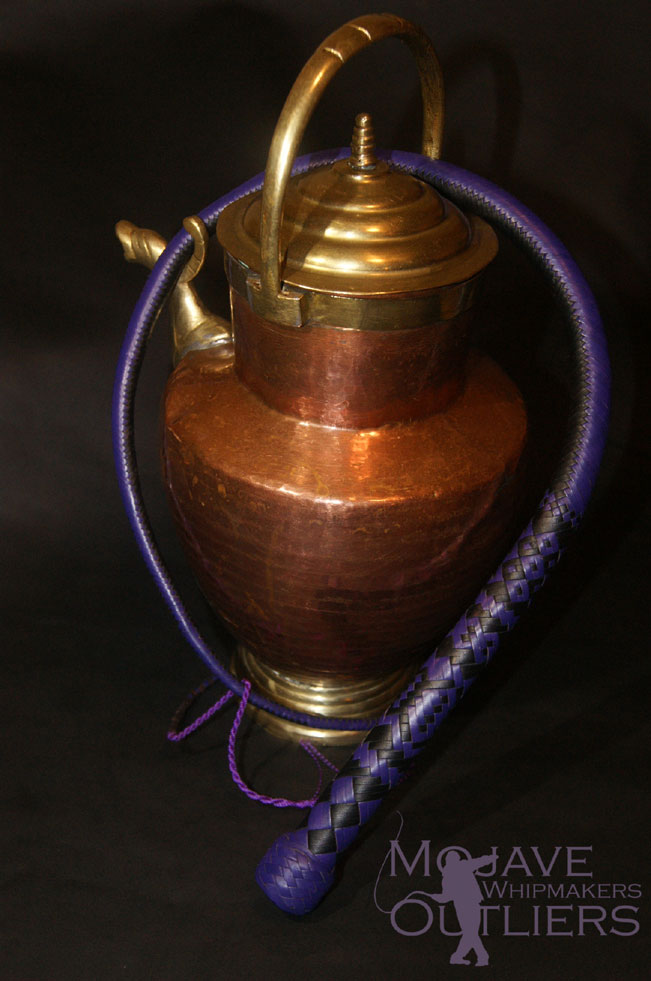“What is spiral plaiting or fancy plaiting?” I get this question a lot, naturally, so I thought I’d do a quick write up offering an explanation with some photos as examples.
First, in whip making there are generally speaking two ways to get the leather strands wrapped around the thong. One is the “alternate strand” method, which is the most commonly used, and involves simply pulling one strand at a time (or sometimes more than one) over the thong, alternating sides as you go. Pretty straight forward, quick and relatively low hassle if you know what you’re doing. Here’s an example of alternate strand plaiting, at 24 plait (that is to say, 24 strands), with an alternating chevron pattern.
Spiral plaiting, on the other hand, involves wrapping half the strands around the thong, tight as you possibly can, and then using Perma Lok needles to interweave the other half of the strands through the spiraled strands, usually using a pre-designed pattern. Below is an example of a whip that was spiral plaited.
Spiral plaiting is fairly straight forward in concept, of course, but in execution it can be quite fiddly and time consuming, and too it often entails a bit of pre-plaiting design work to get a pattern that will then be plaited onto the whip. The point of doing it is that it gives you a great deal more versatility in terms of design compared to alternate strand plaiting.
If you have more questions regarding spiral plaiting, of course send me an email.
Copy and paste version: desert.minx@mojaveoutliers.com




